
On 21 Jun 1886, the foundation stone of the Tower Bridge in London, England was laid (over a time capsule) by the Prince of Wales. The need to cross the River Thames at this point had become increasingly urgent for many years, and finally the necessary Act was passed in 1885.
For more about this structure, read The Tower Bridge from The Romance of Modern Engineering (1908).

On 21 Jun 1898, Donald Culross Peattie was born, an American botanist, naturalist and critically acclaimed author. Today's book pick is: Flowering Earth, by Donald Culross Peattie, who writes an extraordinary chronicle of the plant kingdom. He meanders through the plant kingdom, recalling the marvels he has witnessed in vivid, evocative prose (“On icy peaks the sprawling crustose lichen clings where even a mountain goat would gasp and stumble”) and explaining the innards and workings of plants with clarity and imaginative images (“the pistil is in general shaped like a carafe or Chianti bottle, with a swollen base which is the ovary proper, containing the ovules or unfertilized egg cells”). He writes of plants that inspire awe, like the mighty Sequoia tree—”unimaginable titans … in their uplifted hands they permit the little modern birds … to nest and call”—and of more ordinary greens, from seaweed to conifers, but always with the same sense of wonder.
It is available from Amazon, typically about New from $17.02. Used from $3.55. (As of earlier time of writing - subject to change.)
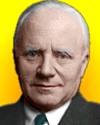 | But science is the collection of nature's answers; the humanities the collection of men's thoughts. |
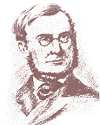 | Whether or not you agree that trimming and cooking are likely to lead on to downright forgery, there is little to support the argument that trimming and cooking are less reprehensible and more forgivable. Whatever the rationalization is, in the last analysis one can no more than be a bit dishonest than one can be a little bit pregnant. Commit any of these three sins and your scientific career is in jeopardy and deserves to be. |
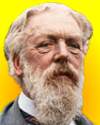 | Cell and tissue, shell and bone, leaf and flower, are so many portions of matter, and it is in obedience to the laws of physics that their particles have been moved, moulded and confirmed. They are no exception to the rule that God always geometrizes. Their problems of form are in the first instance mathematical problems, their problems of growth are essentially physical problems, and the morphologist is, ipso facto, a student of physical science. |
| Before you look at today's web page, see if you can answer some of these questions about the events that happened on this day. Some of the names are very familiar. Others will likely stump you. Tickle your curiosity with these questions, then check your answers on today's web page. | |
| Births | |
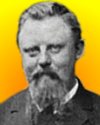 | Willem Hendrik Keesom, born 21 Jun 1876, was a Dutch physicist who was a pioneer in cryogenics and was the first to solidify a certain gaseous element (1926). In work done with M Wolfke, after studying discontinuities in several properties of this element at very low temperatures (1927) they suggested that it may be due to a phase change. They called the element above the transitional in its form I and when below the transition in its form II. What was this element? |
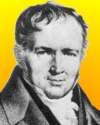 | On 21 Jun 1781, a French mathematician was born, who is known for his work on definite integrals, advances in Fourier series, electromagnetic theory, and probability. The (?) Distribution (1837) describes the probability that a random event will occur in a time or space interval under the conditions that the probability of the event occurring is very small, but the number of trials is very large so that the event actually occurs a few times. His works included applications to electricity and magnetism, and astronomy. His name is also known for the (?) integral, (?) equation in potential theory, (?) brackets in differential equations, (?) ratio in elasticity, and (?) constant in electricity. What is the mathematician’s name that replaces the “(?)” above ? |
| Deaths | |
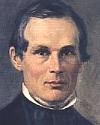 | A Swedish physicist (1814-1874) was a founder of spectroscopy for whom the unit of length equal to 10 Can you name this scientist? |
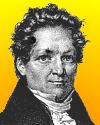 | Louis-Jacques Thenard (1777-1857) was a French chemist. He collaborated with Gay-Lussac, to achieve the first isolation of a certain metallic element in the second period of the Periodic Table. Working independently, his achievements included studies of esters (1807), the discovery of hydrogen peroxide (1818), and work in organophosphorus compounds. He also produced a pigment known as Thenard’s blue, used in porcelain because it is stable at high temperatures. What element did he isolate? |
| Events | |
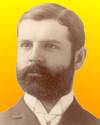 | On 21 Jun 1834, an inventor received a patent for his reaping machine, recognized as the first such practical machine. He demonstrated his machine (1831) in public trial in a field near Walnut Grove, Va. The owner of the field, fearing the machine would rattle the heads of his wheat, stopped the demonstration, and had it moved to a more level field on a neighbor’s farm. In 1902, his harvesting machine company merged with other farm implement manufacturers to form the International Harvester Co. Can you name this inventor? |
 | On 21 Jun of a certain year, the first successful long-playing microgroove phonograph records were introduced to the public by Columbia Records. Made of nonbreakable Vinilyte plastic, they were designed for the new speed of 33-1/3 r.p.m. Columbia originated the term “LP” itself, which it copyrighted for its own exclusive use. In what decade was the LP introduced? Now try a harder question: Who was the famous violinist featured on this first LP? |
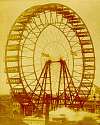 | On 21 Jun 1893, the first Ferris Wheel premiered at Chicago’s Columbian Exposition, America’s third world's fair. It was invented by George Washington Ferris, a Pittsburgh bridge builder, for the purpose of creating an attraction like the Eiffel Tower in Paris. Ferris didn’t use rigid spokes: instead, he used a web of taut cables, like a bicycle wheel, supported by two 140 foot steel towers, on a 45 foot axle. The highest point of the wheel was 264 feet. Was the full passenger capacity of the first Ferris Wheel 108, 540, 1080 or 2160 people? |
Fast answers for the previous newsletter for June 20: to depict the number and variety of genetic combinations • vitamins • Georges Lemaître • virus • Valdez • the decade including the year 1840 • radioactive fallout from the Chernobyl nuclear plant explosion.
 If you enjoy this newsletter, the website, or wish to offer encouragement or ideas, please send feedback by using your mail reader Reply button.
If you enjoy this newsletter, the website, or wish to offer encouragement or ideas, please send feedback by using your mail reader Reply button. Your click on a Facebook, StumbleUpon, or other social button on the site webpages is also a welcome sign of appreciation. Thank you for using them.
© This newsletter is copyright 2020 by todayinsci.com. Please respect the Webmaster's wishes and do not put copies online of the Newsletter — or any Today in Science History webpage. (If you already have done so, please remove them. Thank you.) Offline use in education is encouraged such as a printout on a bulletin board, or projected for classroom viewing. Online, descriptive links to our pages are welcomed, as these will provide a reader with the most recent revisions, additions and/or corrections of a webpage. For any other copyright questions, please contact the Webmaster by using your mail reader Reply button.
--
If you do not want to receive any more newsletters, Unsubscribe
To update your preferences and to unsubscribe visit this link
Executive Real Estate Business Class
-
"It was like a man with wings. It wasn't like anything you'd see on TV or in a monster movie." ...
About the publisher
Search This Blog
Blog Archive
-
▼
2021
(585)
-
▼
June
(64)
- On This Day for June 30 - Night of the Long Knives...
- Newsletter for Wednesday 30 June.
- On This Day for June 29 - London's Globe Theatre d...
- Newsletter for Tuesday 29 June.
- On This Day for June 28 - Assassination of Archduk...
- Newsletter for Monday 28 June.
- On This Day for June 27 - Yen made official moneta...
- Newsletter for Sunday 27 June.
- On This Day for June 26 - Opening of CN Tower, Bab...
- Newsletter for Saturday 26 June.
- On This Day for June 25 - Korean War begun, Antoni...
- Newsletter for Friday 25 June.
- On This Day for June 24 - Russia invaded by Napole...
- Newsletter for Thursday 24 June.
- On This Day for June 23 - Battle of Bannockburn, C...
- Newsletter for Wednesday 23 June.
- On This Day for June 22 - Mutiny against Henry Hud...
- Newsletter for Tuesday 22 June.
- On This Day for June 21 - Japanese forces defeated...
- Newsletter for Monday 21 June.
- On This Day for June 20 - Casket Letters found, Ho...
- Newsletter for Sunday 20 June.
- Tonight at 8/7c: Watch ‘Fight the Power’
- On This Day for June 19 - Rosenbergs executed for ...
- Newsletter for Saturday 19 June.
- On This Day for June 18 - War of 1812 begun, Sir P...
- Newsletter for Friday 18 June.
- On This Day for June 17 - Arrest of O.J. Simpson, ...
- Newsletter for Thursday 17 June.
- On This Day for June 16 - First woman in space, Jo...
- Newsletter for Wednesday 16 June.
- On This Day for June 15 - Magna Carta sealed by Ki...
- Newsletter for Tuesday 15 June.
- On This Day for June 14 - First prisoners at Ausch...
- Newsletter for Monday 14 June.
- On This Day for June 13 - Historic meeting between...
- Newsletter for Sunday 13 June.
- On This Day for June 12 - Election of Boris Yeltsi...
- Newsletter for Saturday 12 June.
- Listen Now! Blindspot: Tulsa Burning Podcast
- On This Day for June 11 - Oklahoma City bomber exe...
- Newsletter for Friday 11 June.
- On This Day for June 10 - First “witch” hanged in ...
- Newsletter for Thursday 10 June.
- On This Day for June 9 - Landslide reelection vict...
- Newsletter for Wednesday 9 June.
- On This Day for June 8 - Michelangelo's David inst...
- Newsletter for Tuesday 8 June.
- Action required: Update your HistoryExtra password
- On This Day for June 7 - Lateran Treaty ratified, ...
- Newsletter for Monday 7 June.
- On This Day for June 6 - Normandy Invasion begun, ...
- Newsletter for Sunday 6 June.
- On This Day for June 5 - Start of the Six-Day War,...
- Newsletter for Saturday 5 June.
- On This Day for June 4 - Dunkirk evacuation ended,...
- Newsletter for Friday 4 June.
- Tonight: ‘Alone’ Returns at 9:30/8:30c
- On This Day for June 3 - Pro-democracy protest in ...
- Newsletter for Thursday 3 June.
- On This Day for June 2 - Elizabeth II crowned quee...
- Newsletter for Wednesday 2 June.
- On This Day for June 1 - Debut of CNN, Morgan Free...
- Newsletter for Tuesday 1 June.
-
▼
June
(64)
-
Blogroll
-
About
HistoryFact










0 comments:
Post a Comment